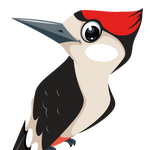- Subscribe to RSS Feed
- Mark Topic as New
- Mark Topic as Read
- Float this Topic for Current User
- Bookmark
- Subscribe
- Mute
- Printer Friendly Page
Discussions
Solve problems, and share tips and tricks with other JMP users.- JMP User Community
- :
- Discussions
- :
- Interaction Profiler: show Datapoints?
- Mark as New
- Bookmark
- Subscribe
- Mute
- Subscribe to RSS Feed
- Get Direct Link
- Report Inappropriate Content
Interaction Profiler: show Datapoints?
In Jmp18, there is a new feature to activate data points in Prediction Profiler enhancements in JMP® 18
Is there an option to activate the data points as well for interaction profiler?
Accepted Solutions
- Mark as New
- Bookmark
- Subscribe
- Mute
- Subscribe to RSS Feed
- Get Direct Link
- Report Inappropriate Content
Re: Interaction Profiler: show Datapoints?
Try turning on the Overlaid Interaction option. It allows you to see the interactions in the profiler itself.
- Mark as New
- Bookmark
- Subscribe
- Mute
- Subscribe to RSS Feed
- Get Direct Link
- Report Inappropriate Content
Re: Interaction Profiler: show Datapoints?
Try turning on the Overlaid Interaction option. It allows you to see the interactions in the profiler itself.
- Mark as New
- Bookmark
- Subscribe
- Mute
- Subscribe to RSS Feed
- Get Direct Link
- Report Inappropriate Content
Re: Interaction Profiler: show Datapoints?
ah, right :)
it helps to specify colors for the different rows. then the data points in prediction profiler get colored as well - thanks for this nice feature :)
like in this example where colors are specified by X2 - i.e. matching the second row of the interaction profiler.
- Mark as New
- Bookmark
- Subscribe
- Mute
- Subscribe to RSS Feed
- Get Direct Link
- Report Inappropriate Content
Re: Interaction Profiler: show Datapoints?
also notice that if you hover over an interaction curve, it shows as a vertical tick indicator the levels of the other variables
- Mark as New
- Bookmark
- Subscribe
- Mute
- Subscribe to RSS Feed
- Get Direct Link
- Report Inappropriate Content
Re: Interaction Profiler: show Datapoints?
yes, I noticed.
another way to get the information: the hover label
Nevertheless, it takes a while to get the "full picture" by hovering over individual interaction lines and checking the respective variable settings. Here I prefer the color coding in the interaction profiler - it allows "my eye" to process this information
(Plenary: All Graphs Are Wrong, but Some Are Useful by @XanGregg )
On the other hand, how to squeeze all the color coding of several interaction profiles simultaneously into the interaction lines of the prediction profiles? A neutral grey seems the only option.
Maybe: add some quick select buttons, to (gradient) color code the lines which belong to one variable - keeping the interaction with others variables gray. Then the user can pick the interaction which is most prominent and highlight it.
or: use different colors for interactions which belong to different variables.
(e.g. all green interaction curves are interactions with X1, all blue curves are interactions with X2, all red curves belong to X3.)
Recommended Articles
- © 2026 JMP Statistical Discovery LLC. All Rights Reserved.
- Terms of Use
- Privacy Statement
- Contact Us




